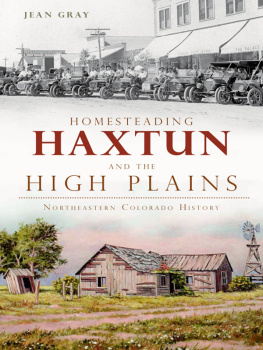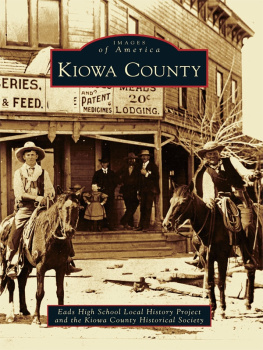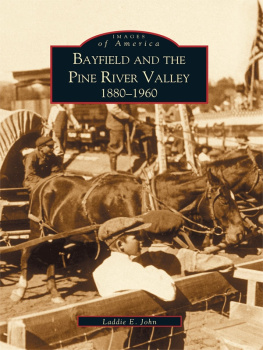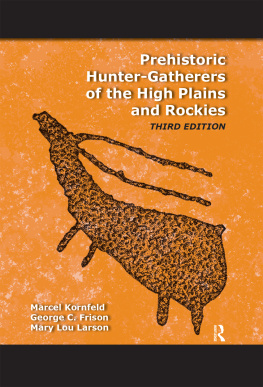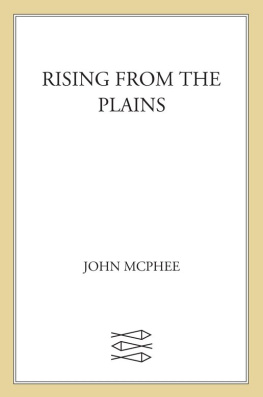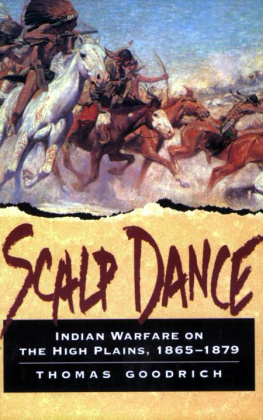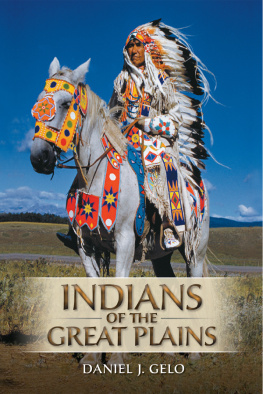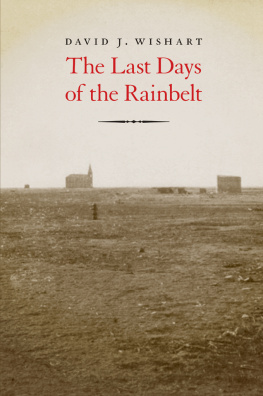
Published by The History Press
Charleston, SC 29403
www.historypress.net
Copyright 2013 by Jean Gray
All rights reserved
Front cover, bottom: Homestead (1994) by Jessie Whitney Scott. Courtesy of Wayne and Doris Scott.
First published 2013
e-book edition 2013
Manufactured in the United States
ISBN 978.1.61423.967.3
Library of Congress CIP data applied for.
print edition ISBN 978.1.60949.843.6
Notice: The information in this book is true and complete to the best of our knowledge. It is offered without guarantee on the part of the author or The History Press. The author and The History Press disclaim all liability in connection with the use of this book.
All rights reserved. No part of this book may be reproduced or transmitted in any form whatsoever without prior written permission from the publisher except in the case of brief quotations embodied in critical articles and reviews.
CONTENTS
ACKNOWLEDGEMENTS
A history that goes back one hundred years depends on information that would be long gone if not for those who collect and preserve it for the future. This book depended much on those collectors. I am so grateful to the men and women of the Phillips, Fleming and Logan County Historical Societies who work vigorously to collect history for print and display. I especially want to thank Phillips County Museum volunteers Carol Haynes and Hilda Hassler for opening the museum on Wednesday afternoons and giving me access to the wealth of information stored there. Loads of thanks also go to Phillips County court clerk Joy Strack and Judy Beavers and other staff at the Phillips County Assessors Office for digging through ancient files. I also owe a huge debt of gratitude to the late Alice (Taylor) Bamford for ensuring that fifty-six years of the Haxtun Harvest reside at the Phillips County Museum in Holyoke.
Many people provided letters, essays and photos that helped recreate this time in history. I am indebted to Randy Overstreet for allowing me to read the diary kept by his great-grandfather; to Virgil and Eloise Harms for entrusting me with Paolis minute ledgers; to Wilbur Kipp for sharing his photos and memories; and to Reon Chaney for sharing his photos and memories and taking time to give me a driving history tour. Huge thanks go to Doris and Wayne Scott for visiting with me and permitting me to use a Jessie Scott print for the books cover. Thanks to Wesley Brown for digging out his historic maps and scanning them for me; to the librarians at the Sterling Public Library, who found requested books either in the library or through inter-library loan and worked with me as I struggled to use the microfilm viewer; and to Linda Conn, librarian at the Fleming Library, for maintaining a wonderful local history section.
Others who provided information or photos included Tommy Thompson, Catalina Flores of Palouse Magazine, Alice Strohm descendants Connie Lawrence and DeLoris Fellers, CDOT librarian Joan Pinamont, Tom and Shawn Edwards, Irene Livingston, August and Jan Bjorklun, Ross Frank, Dewey and Lorraine Green, the Wisconsin Historical Society, Library of Earth Science librarian Naomi E. Herser, Alice Holloway, John M. Delander descendants Marguerite Baker and Scott Williams, Rebekka (Syed) Jackson, Ezekiel Scott descendants Critia Hadley and Lisa Betz, Larry and Mary Unrein, Wayne Wertz and Darlene Bornhoft.
A special thanks to Gay McDaniel and Dorothy Ortner for taking the time to read the manuscript with red pen in hand, to Becky LeJeune and Katie Orlando of The History Press for fielding my numerous questions and to Julia Turner of The History Press for her excellent editing skills.
The two prints for the cover of this book were painted by Jessie (Whitney) Scott. Scott moved with her family to Dailey, Colorado, from Portis, Kansas, shortly after her birth and developed her love of art at an early age. She began to draw after viewing Pikes Peak from a train window when she was four years old. She specialized in western landscapes, and her painting Mountain Mist hung in the Agricultural Hall of Fame in Kansas City, Kansas. She was a prolific artist who worked in oils, watercolor, sculpture, stained glass and, as her eyesight failed in her later years, ceramic tiles, working well into her nineties. Her murals hang in area banks, and her stained-glass windows adorn area churches. Those she created for her own church, the Haxtun Church of the Brethren, depict the life of Christ from his birth to his Ascension. Jessie Scotts paintings can be found in private collections throughout the United States and Europe. Her amazing body of work is a source of pride for Northeast Colorado.
FOREWORD
This book represents Jean Grays passion for the subject and the numerous hours she spent researching the history of this special place in the state of Colorado.
The pioneers of this area showed great faith, perseverance and determination. They saw something special here that gave them the hope and dedication to establish the area into a place loved by those who call it home.
When this community settles on a goal, many pitch in to complete that goal in a successful way, not always without bumps and hurdles to cross, but with determination, dedication and hard work they accomplish the mission.
The men and women who homesteaded this area left an enduring mark. This history points out the many times that these settlers supported each other, a trait that continues today. Those who lived through rigorous times fought their way to success and prominence in a variety of fields and left their imprints on this part of northeast Colorado.
This book is long overdue, and I tip my hat to Jean Gray for telling this story.
GAY MCDANIEL
Mayor of Haxtun
Colorado 19922008
Chapter One
PRAIRIE, INDIANS AND BUFFALO
Ice ages, tropical oceans, volcanic eruptions and ascending ancient layers of earth designed the 104,247 square miles that became Colorado with three geological landscapes: the plateaus of the Western Slope, the central mountain region and the eastern High Plains. Of the High Plains, Walt Whitman wrote in 1883: I wonder indeed if the people of this continental West know how much of first-class art they have in these prairieshow original and all your ownhow much of the influences of a character for your future humanity, broad, patriotic and new?
On the prairie that Whitman describes, the history of Haxtun and the farmlands surrounding it and its neighboring communitiesPaoli, Dailey and Flemingemerged. The four towns lie along a twenty-two-mile stretch of Colorados U.S. Highway 6, with Haxtun and Paoli in Phillips County to the east and Dailey and Fleming in Logan County to the west.
Colorado is a semiarid state with an average annual precipitation of between six and sixty inches of moisture from snow and rain, depending on altitude and location. Areas at fourteen thousand feet receive five times as much precipitation as those at altitudes below five thousand feet, which include the eastern plains.
The High Plains, which lie within a larger area known as the Great Plains, stretch from the base of the Rocky Mountains east to the western edge of Nebraska, south to the Texas Panhandle and north to South Dakota. Early explorers to the area found grassland filled with buffalo and Indians, a barren country with minimal water and few trees. Zebulon Pike, after exploring the Great Plains for President Thomas Jefferson in 1806, named it the Great American Desert. Major Stephen Long, who followed Pike with an expedition in 1820, entered Colorado near Julesburg, some forty miles northeast of Haxtun, and followed the Platte River to Colorado Springs. He declared the prairie east of the Rocky Mountains almost wholly unfit for cultivation. One hundred years later, a group of hardy individuals would prove Long wrong, but the first humans to enter the area came to hunt.
Next page
